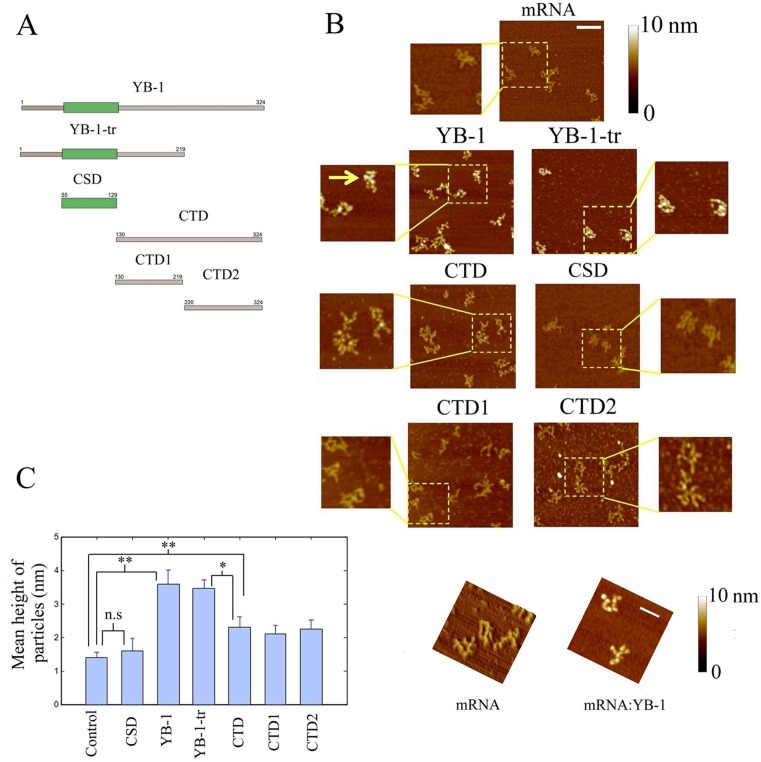Figure 1.
The CTD of YB-1 is required for its binding to mRNA while its cold-shock domain is rather important for the formation of beads-on-a-string structure. (A) Schematic view of the YB-1 constructs used in this study. (B) The formation of nucleoprotein particles after the interaction of 2Luc mRNA (2 nM) with the YB-1 constructs (300 nM) was detected on a mica surface by AFM, as described in Materials and Methods. We noticed the presence of the typical beads-on-string structures in the presence of both YB-1 (see arrow) and YB-1-tr compared to free mRNA. Scale bar: 200 nm. (C) Left panel: Measurements of the particle heights on the mica surface. In the presence of all YB-1 constructs, except the CSD, a significant increase in the particle height compared to free mRNA was measured, which reflects their binding to mRNA. Due to the formation of beads-on-a string structures, the mean height of the particles was however larger in the presence of YB-1 and YB-1-tr than in the presence of the CTD, CTD1 and CTD2. The CSD may therefore be necessary for the formation of the beads-on-a-string structures but not for the binding to mRNA. The ‘particle analysis’ application of the Nanoscope IIIa software (version 5) over at least 50 particles was used to measure the heights on three different samples. Results are mean ± SD. *P < 0.05; **P < 0.01; by t-test. Right panel: typical AFM images in 3D showing the marked difference between the branched structure of free mRNA and the beads-on-a-string-structures of saturated YB-1:mRNA complexes. Scale bar: 200 nm.

